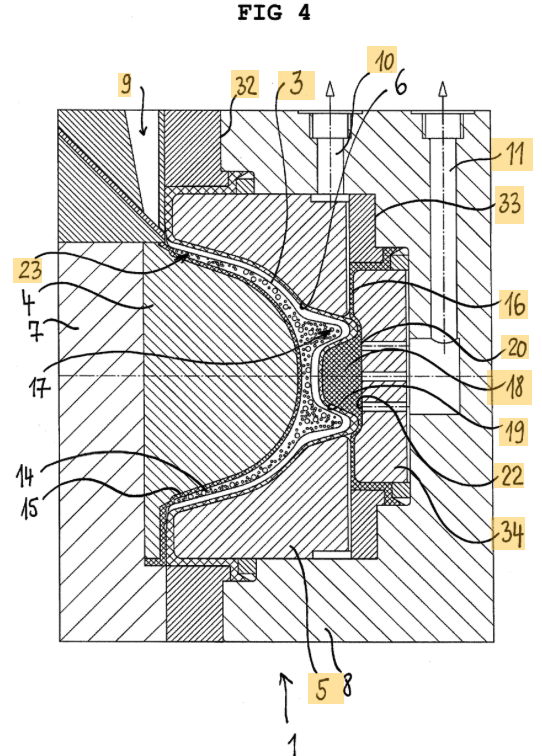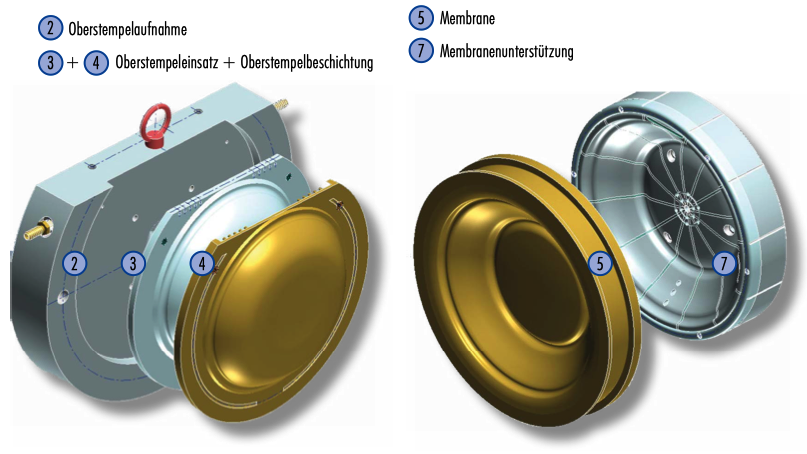Isostatic pressing
Isostatic pressing

Isostatic pressing is a process for the isostatic pressing of objects made from ceramic granulate.
The pressing tool contains a lower punch (5) and an upper punch (4). Between them is a filling chamber (14). This is filled with granulate. This granulate is compacted with the aid of an elastic diaphragm (6) arranged on the lower punch and subjected to a pressing pressure in such a way that the granulate forms a pressed object (3). In order to avoid the formation of cracks caused by venting problems, pre-compaction of the granulate in a partial area (17) of the filling chamber (14) is proposed.

(Image rights: Sama Maschinenbau, Weissenstadt)
The pressing tool comprises two interacting tool parts, for which the terms lower punch (top right in the picture above) and upper punch (top left in the picture above) are used here. The lower plunger is the tool part on which the elastic diaphragm that can be subjected to a pressing pressure is arranged, which compresses the granulate filled into the filling space between the two tool parts on one side when the pressing pressure is applied in the direction of the other tool part, the upper plunger.
Both the mould construction and the necessary raw material - the granulate - are extremely expensive compared to traditional porcelain production. On the other hand, production is very efficient and causes significantly less waste than conventional production. For the production of relief porcelain, isostatic pressing is hopelessly superior to the overrolling process. On the other hand, the possibility of mould variation is considerably more limited with isostatic pressing.
The use of this technology is only worthwhile for print runs of more than 100,000 units per year and is only suitable for mass production of white goods.
Isostatic pressing - the curse and blessing of the German porcelain industry
Isostatic pressing is a purely German invention and the result of collaboration between two pioneers of their time. C.M. Hutschenreuther and Christian Netzsch jointly developed this process technology and thus secured a considerable technical lead over many years. Once a closely guarded secret, this production method for flat parts is now sold by machine manufacturers all over the world.
Almost every large porcelain factory in the world, from Poland to China, now has this technology, of which Pierluigi Coppo, head and current owner of Rosenthal Porcelain, confirms "...In countries like Hungary, Romania, Poland, Portugal or China, which also produce porcelain and use the same machines as we do... they make quite good quality at very low prices..."
At the moment (as of 11/2019), the German automotive industry is on exactly the same path, damaging the entire industry in the long term by selling off its technology.
The process of isostatic flat part production is currently carried out in two different ways:
